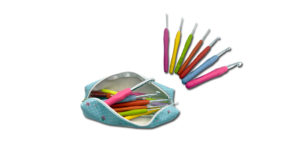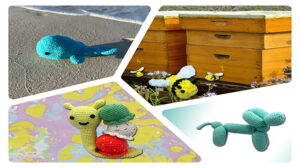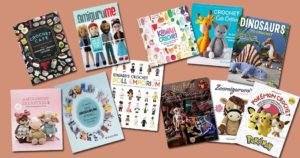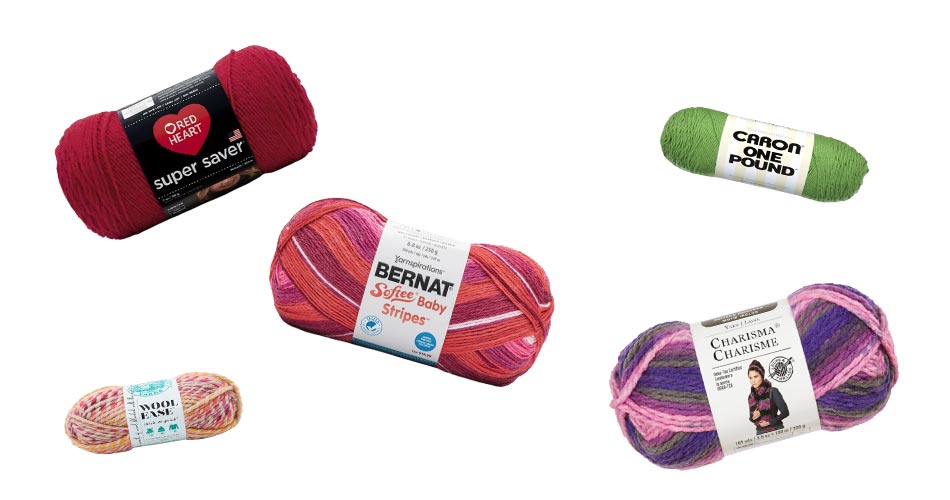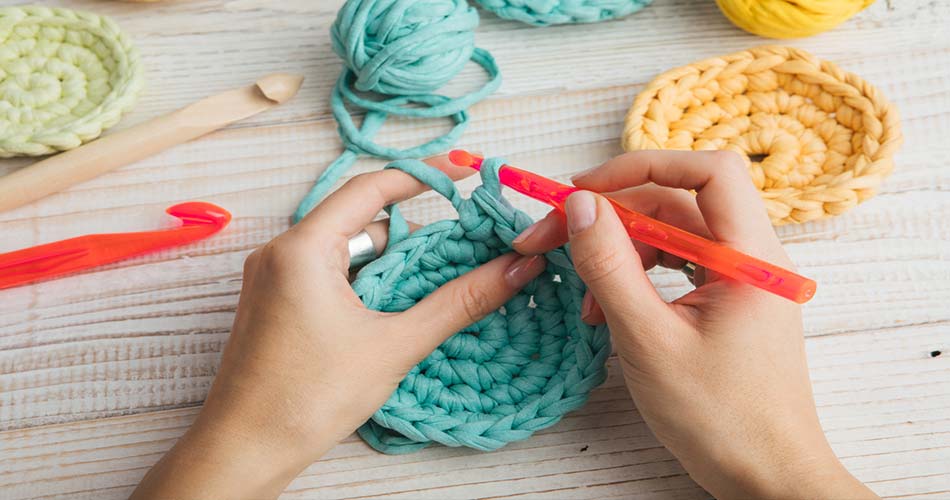Crochet is a beautiful, fun and diverse art that is gaining popularity! Once the basic stitches are learned you can make almost anything! With crochet you can make cute amigurumis, elegant home décor or even trendy clothes!
If you are new to crochet or just want some tips on how to improve your crocheting you are in the right place! Here 7 crochet tips you need to know!
1. What Size Hook Should Beginners Use in Crochet?
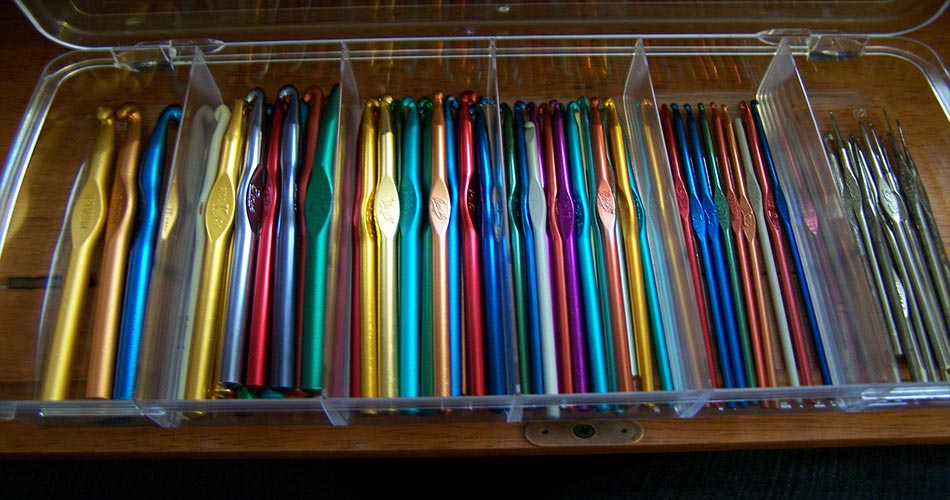
Crochet hooks come in a wide variety of sizes, shapes, colors and materials. It can be confusing where to start! So, how do we know how to choose the right crochet hook? Depending on where you live, crochet hooks are classified by letter (in the USA) and by their size in millimeters. The size of the hook you choose will largely depend on the type of project, type of yarn you want to use and the overall finished look you desire.
For beginners it is highly recommended to start with a midsized hook like an H-8 hook (5mm). This is a great beginner size because it allows beginners to see their stitches and get the feel of crocheting. In addition, an H or 5mm hook works well with midweight worsted weight yarns which is great for beginner projects!
Pro Tip: Once you’ve mastered using an H or 5mm hook you can try experimenting with smaller hooks and lighter weight yarns or even larger hooks and heavier yarns!
2. Picking Your Crochet Yarn as a Beginner
When choosing a yarn as a crochet beginner try using a worsted weight (weight 4) yarn in a bright color like green or blue. Avoid using white, black, yellow and dark colors as a beginner as it can be more difficult to see your stitches (and your mistakes!). Using a bright color that is easy to see will allow you to understand crochet stitch structures and help you learn faster!
Pro Tip: When yarn shopping be sure to check the weight number on the yarn label to make sure that it is a weight 4 or worsted weight yarn!
3. How to Use the Crochet Hook
There are many ways to hold the crochet hook and you can choose whichever way is most comfortable for you! You can also try experimenting with different ways to hold the hook to see how your work comes out better and faster. With that said, there are two main ways that people tend to hold their hooks the knife method and the pencil method.
Knife Method: Using your dominant hand take hold of the hook as if you were holding a knife with your thumb over the grip area (flat part) and your index finger a bit more extended. The rest of your fingers naturally curve around the hook. In this method your hand is positioned over the hook.
Pencil Method: Using your dominant hand take hold of the hook like you would a pencil. Position the hook between the thumb and index finger and allow it to rest upon the middle finger. The key to the pencil method is that the hand is under the hook instead of over the hook like in the knife method.
4. Pay Attention to This Crochet Tension Tip
Firstly, what is tension in crochet? Tension is how tight or loose you hold your yarn. This is important because it will determine how tight or loose your stitches are. If you are crocheting too tight you will find that it is difficult to pull the yarn through to make stitches. If you are crocheting too loose you will find that it is difficult to grab the yarn with the hook. So, let’s see how to regulate tension in crochet!
To regulate your yarn tension try looping your working yarn around your pinky finger, over your ring finger, under your middle finger and over your index finger. Be sure that the yarn flows freely between your fingers creating just a bit of tension!
Key Takeaway: Yarn tension in crochet is super important! An inconsistent tension can make projects look messy and affect your final result. Always try to keep a medium amount of tension to avoid crocheting too tight or too loose.
5. How to Crochet Neatly
When starting out in crochet, it is normal for the first few tries to come out messy! However, with these tips you will be crocheting neatly in no time!
Count your stitches! Always count the number of stitches in each row or round! This way you’ll know if you make a mistake and can go back and fix it before you advance too far.
Maintain a consistent tension! If your tension varies too much some stitches will come out bigger than others, resulting in a wavy or lopsided project!
Pro Tip: Try winding your skeins into balls- it is easier to maintain tension and avoid tangles with balls of yarn!
6. Start With Very Beginner Crochet Projects
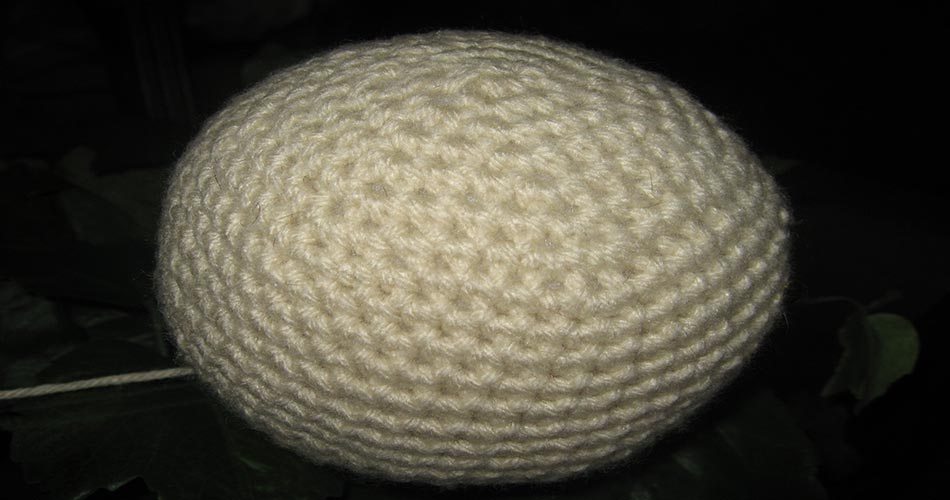
Avoid getting frustrated and always start with beginner friendly projects like granny squares and amigurumi balls!
Granny squares are a great beginner project because they are versatile, easy and repetitive. By repeating the same pattern you can find your crochet rhythm.
Amigurumi balls are also a great beginner project! They are a perfect introduction into the amigurumi world and allow you to practice crocheting in the round as well as decreasing and increasing stitches.
Once you learn those, you can try something like an amigurumi whale or an amigurumi honey bee. Both are great for beginners.
7. How to Get Good at Crochet
Practice, practice, practice! The best way to get good at crochet is by practicing a bit every day. Even if only for a few minutes, every stitch counts toward more fluidity and mastery!
Try not to get frustrated and don’t be afraid to unravel! Check for mistakes often, count your stitches and unravel as soon as you notice something is wrong. Therefore, you can learn from you mistakes quickly and continue your project!
Try different types of crochet projects. Experiment with new shapes, stitches and styles! This way you can apply your knowledge in many different contexts and continue growing as a crocheter!
Bonus: 2 Tips to Crochet Faster
If you got this far than two ways you can crochet faster are by changing your materials (yarn and hook) and by setting up your posture.
1. Use a bulkier yarn and a comfortable hook. Although this tip doesn’t help you make stitches faster, it will make the time it takes you to finish your project much shorter. It will definitely be faster to finish a project with a bulky yarn and a larger hook than with a fine yarn and smaller hook. So, keep this in mind!
Hook design and material (wood, metal, plastic) can also contribute to fluidity and speed!
2. Set up your posture by finding a comfortable seat with good posture and back support. Stretch your wrists and fingers before starting to crochet in order to loosen up the hands and prep them for crocheting. Having good posture and flexible wrists will allow you to get into a steady crochet rhythm.
Conclusion
Crochet is a whole world of creation and inspiration. I hope that these 7 tips have been helpful in getting you started on your crochet journey! In short, using the right materials and taking the time to learn how to hold the crochet hook and yarn are extremely important. They are the base of all other skills and will help you later when learning more advanced stitches and patterns.
Most importantly, don’t forget to relax and have fun! Keep trying and practicing everyday and you won’t be disappointed with the results! Happy crocheting!

